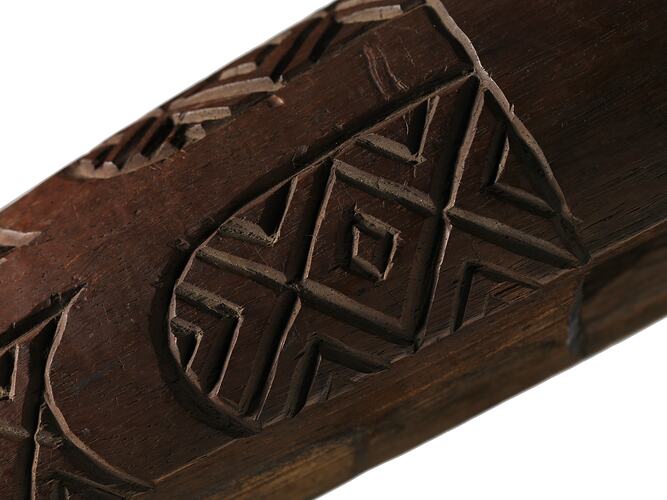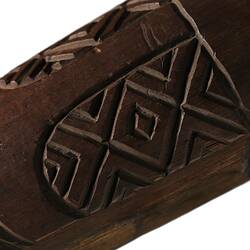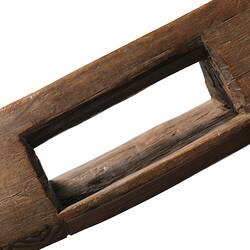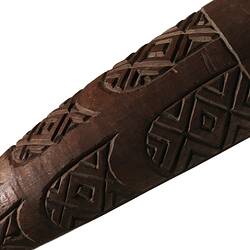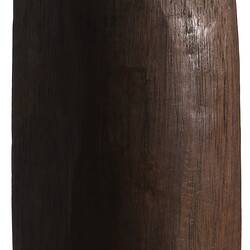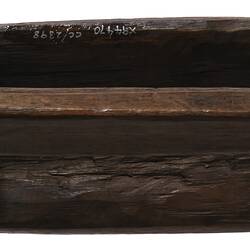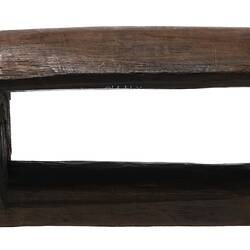Summary
The traditional engraving tool used by Aboriginal men in Victoria for marking their designs on the mulga (parrying shield) differed depending on the resources available to them. These included specially shaped stone, volcanic glass, or a small stick with a sharp stone or possum-tooth attached to the end.
In 1890, the maker of this mulga used metal, a resource newly available, to engrave the distinctive design of a diamond pattern and smooth dividing bands. This pattern is characteristic of the art of Victorian Aboriginal people that has been practiced for countless generations.
Metal was initially introduced into northern Australia, in the 1700s by visiting Macassans fishing for trepang. It was not until later British settlement that iron axes and other metal tools became more frequently available to Aboriginal groups in Victoria. The ancient artistic traditions and designs of the Victorian Aboriginal people continue to be passed to new generations of artists who also use new materials and technologies to create their distinctive mark.
In his ground breaking 2014 book 'Dark Emu, Black Seeds: agriculture or accident?' Historian Bruce Pascoe illuminates the multilayered, deep knowledge that is embedded within pattern and mark-making for Aboriginal peoples. Pascoe explores the ways in which such practices have endured despite the ravages of colonisation, and continue to be re-created and reinscribed as testament to the survival and continuous belonging of Aboriginal people and culture.
Local Name
Mulga
Physical Description
Elliptical shaped shield with triangular cross section. The handle is carved out of the solid and is flushed with the posterior surface. The anterior surface has been decorated with deep incisions in concentric diamond shapes. One end has two nails stuck in it.
Significance
Research of historical records indicates this shield was one of the large amounts of material culture from Victoria that was taken overseas at some point in the 19th and 20th centuries. It came into the Museum collection in 1995 following a donation by an international collector.
Regrettably neither the name nor clan of the man who carved this spear shield were recorded when it was obtained from him in 1850. However when he made it, his identity and Country would have been evident to the men and women from other clans, recognised through the complex visual language he has etched.
More Information
-
Object/Medium
Shield
-
Maker
-
Locality
-
Date Produced
-
Collector
-
Object Measurements
520 mm (Length), 80 mm (Width), 85 mm (Height)
-
Classification
-
Date Made
-
Maker
-
Clan/Language Group
-
Place Made
-
Indigenous Region
-
Keywords
-
Collection Names
-
Type of item
-
Discipline
-
Category
-
Collecting Areas
